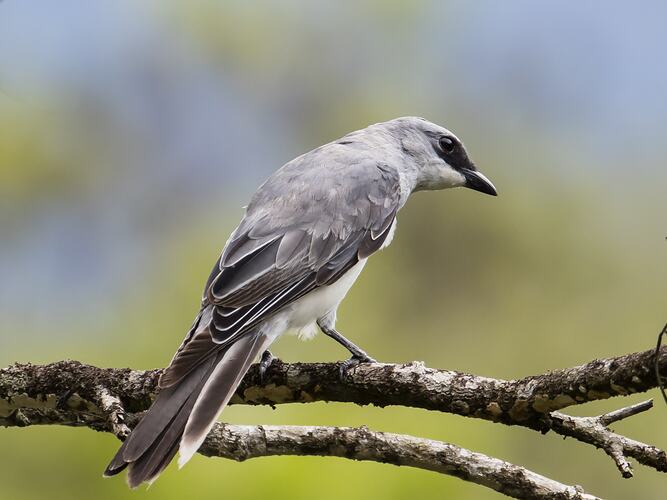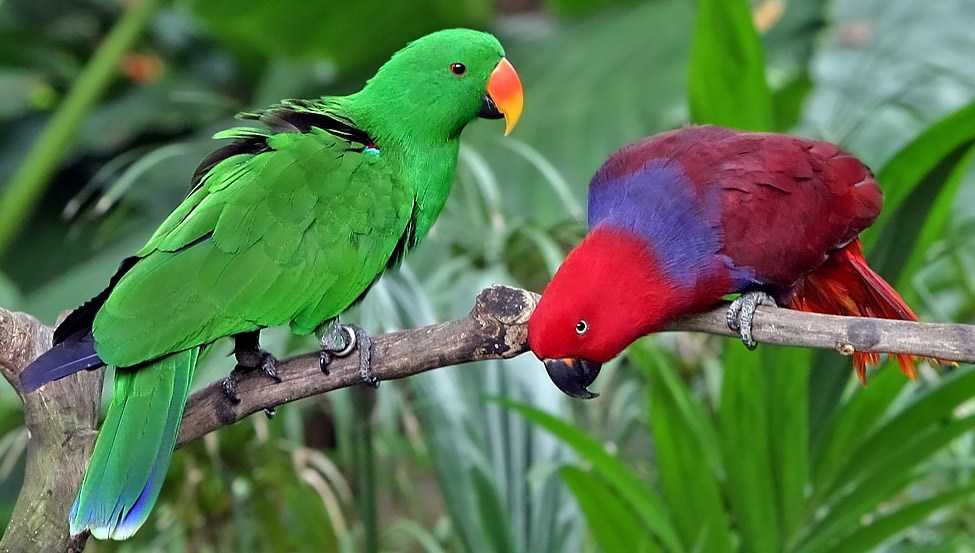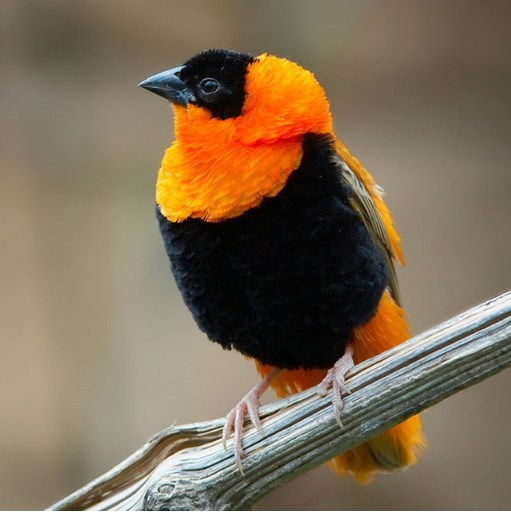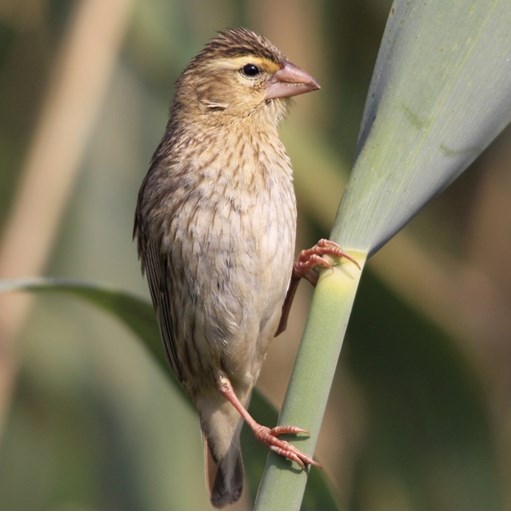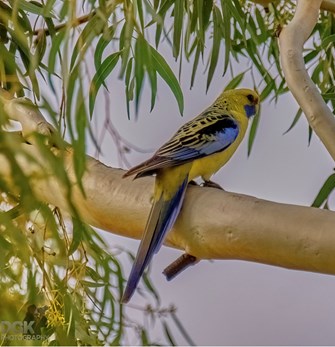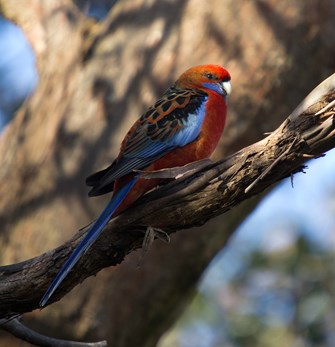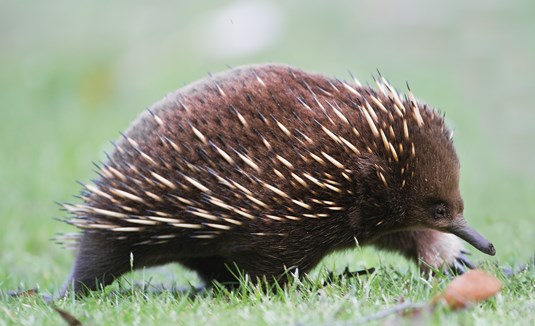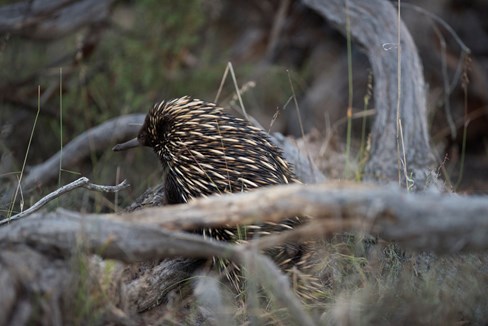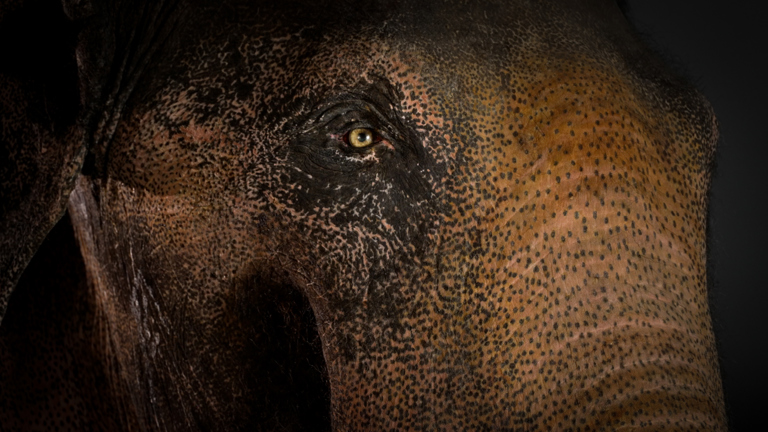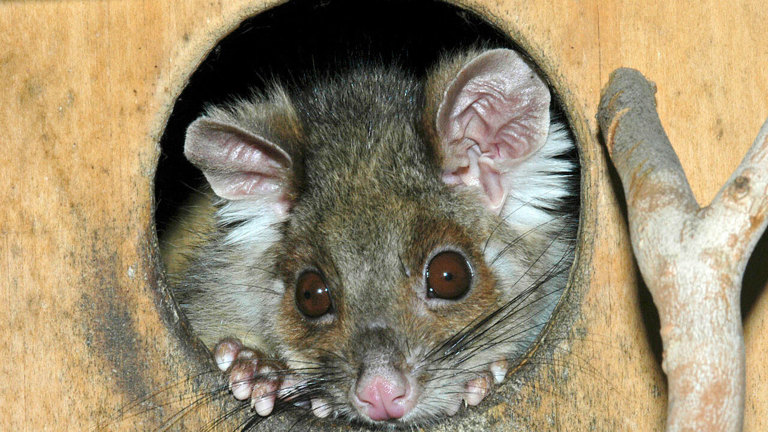Colour Variations: It doesn't look like that in the book
Albinos, mutations and the mysteries of strangely coloured animals.
Just last week, a family member called asking for help to identify a bird she had seen. Without any images, it was a nearly impossible task, and to be franks, terms like ‘honeyeater-like, but not a honeyeater’, while well-intentioned, were not as helpful as intended.
After some exhaustive research, we agreed that the likely candidate was a White-bellied Cuckoo-shrike Coracina papuensis, albeit an individual that was showing a known, but different plumage than commonly shown in field guides. This prompted a much-quoted phrase familiar to me and my colleagues in the Public Information team – “well, it doesn’t look like that in my book’.
This is true – with every best intention, field guides rarely show more than the appearance of adult males and females of most species of birds or mammals, for the sake of space. With Australian Birds, you are dealing with nearly 1000 species, so it is a little impractical to show all the different variations without making a field guide unsuitable for the field. The more authoritative scholarly handbooks generally do have this level of information, but these are not ideal field guides for most people. The advent of phone apps as Field Guides has helped, but it’s inevitable that occasionally we see things that are not readily recognizable. Here are some of the main reasons.
Sexual dimorphism
When individuals of a species are visibly different on the basis of their sex, this is called sexual dimorphism – this can be either subtle, or quite extreme – a Wild Budgerigar Melopsittacus undulatus can be ‘sexed’ on the basis of the colour of its nostrils and relative size, whereas most species of spider vary hugely in size and colour depending on sex, so much so that they barely look like the same species at all. And, contrary to popular thought, the rule isn’t always that the females are duller or less striking of the sexes – two good examples being the Redback Spider Latrodectus hasseltii and the Eclectus Parrot Eclectus roratus, where the females are bigger (in the case of the spider) or visually more striking (for both species).
Seasonal colouration and developmental stages
Often animals can take a very different appearance depending on the time of the year – birds in particular are renowned for their variable plumage, sometimes to an extreme extent. One African bird, the Red Bishop Weaver Euplectes orix, really pushes the envelope in this respect – in breeding season, the males sport strikingly contrasting orange, black and brown plumage, with the intent being to impress and woo the females. Then, in what some might regard as ‘typical male behaviour’, once the breeding goal has been achieved, the males revert to a drab brown, becoming indistinguishable from the females outside the breeding season.
Similarly, the stage of development of an animal can drastically change the appearance of the animal. This is obvious in some cases; invertebrates with a metamorphic development by definition dramatically transform their appearance as they approach adult stages (think caterpillars to butterflies, ‘mudeyes’ to Dragonfly, etc.). But this can be subtle as well – amongst birds, the iconic Wedge-tailed Eagle Aquila audax is known to have a markedly different plumage in juvenile stages, often taking years to attain their full plumage.
Interspecific variations: Subspecies, Morphs, Phases – you mean there’s more?
As if the variations above aren’t enough, animals with broad distributions can often look different at different parts of their distribution – for example, there is only one species of Platypus Ornithorynchus anatinus, but those from the colder waters of Tasmania are generally larger and shaggier-furred than their sleek, smaller cousins from Queensland. Similarly, their monotreme relatives the Short-beaked Echidna, Tachyglossus aculeatus are a single species, but the Tasmanian ones tend to grow long, shaggy hair that covers some of their spines – so the climate determines the fur coat, it seems. This variation can lead to the occurrence of ‘phases’ or ‘morphs’ within a species, and if they are consistent with the distribution of the animals (say, in the case of the Monotremes above, separated by a geographic barrier, in the form of Bass Strait), then this may start the animals on the long and exciting road to forming a sub-species, and given time, perhaps eventually a new species.
This is called intraspecific variation, and it is an example of evolution in process – you need only look at the various forms of Platycercus elegans (known as either the Crimson Rosella, Yellow Rosella or the Adelaide Rosella) – all are treated as a single species on a genetic level, with different coloured subspecies that vary depending on where they are found within their distribution, grading from predominantly red to yellow plumage. These variations in appearance based on geographic origin are called ‘Clines’, and they are starkly apparent when you examine a Museum collection for a species with a wide distribution. In the case of the Rosellas mentioned here, interestingly, the ‘dry country’ forms are yellow, the wetter, mountain-dwelling forms are crimson, and where the two distributions converge, they are a kind of orange. This is a bit like ‘live action’ speciation happening as we see it; a fascinating story, but one we won’t get into here just yet!
The Mutation Explanation
Even when taking into account the sex, time of year, interspecific variation and the developmental stage of the animal, we can’t rule out other forms of natural variation of appearance amongst wild animal populations. Mutations are a very important and omnipresent fact of all life, effecting and affecting everything from subtle size differences to drastic variations in colour within a species – even extra limbs (but these are rarely advantageous).
Mutations are the engine that drives the process of evolution – the variations that individual mutations create amongst populations leave a kaleidoscope of different expressions of the genetic code of any species, and environmental pressures will determine if these variations are beneficial for the survival of the species or not. If they turn out to be an advantage, the mutations survive to share their contribution to the gene pool; if not, they are removed from the population. This is, in essence, Natural Selection. Mutations can be caused by inherited traits passed down through generations, can be triggered by external stimuli, or can even occur with apparent spontaneity. A seemingly minor change in the genetic code of any animal or plant (the genotype) may have drastic effects on the way these genes are expressed in terms of the appearance of the animal or plant (the phenotype).
There are a few conditions that are the result of mutations that drastically change the appearance of organisms, such as:
- Albinism, the total lack of the pigment melanin on the eye, fur, feathers or skin,
- Leucism, the partial lack of melanin, often confused with albinism, but doesn’t affect eye colour,
- Melanism, the excess production of melanin, resulting in black or very dark-coloured individuals
- Erythrism, the over-production of reddish pigmentation
- Xanthochromism, the excess production of yellow pigments
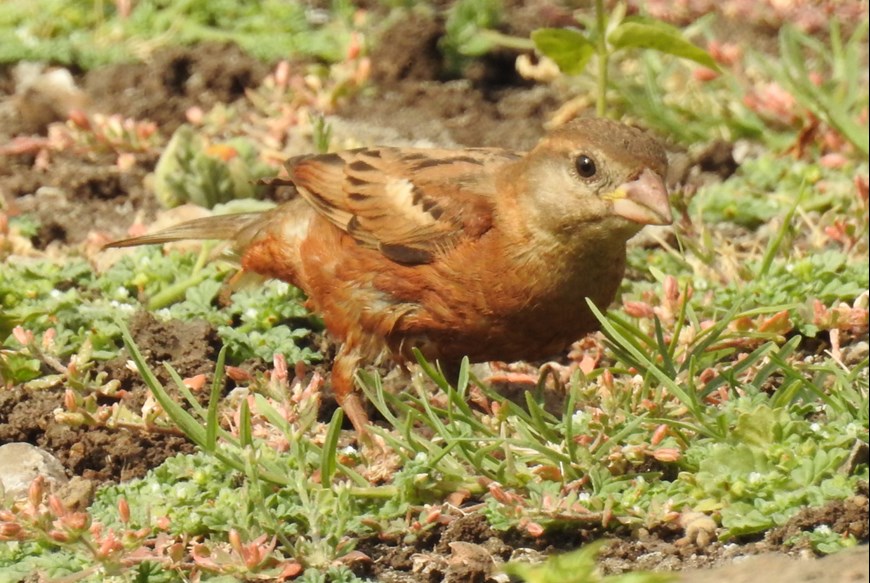
Source: Wikimedia
Photo: Dr. Raju Kasambe
These conditions, and many others, all arise naturally in animal (and plant) populations as a result of mutations. They are usually rare, for several reasons – the mutation itself is not a frequent occurrence, and the individuals that show the condition often fall victim to prey by virtue of not being able to camouflage, show a higher sensitivity to sunlight, or otherwise are not advantaged by their distinctiveness.
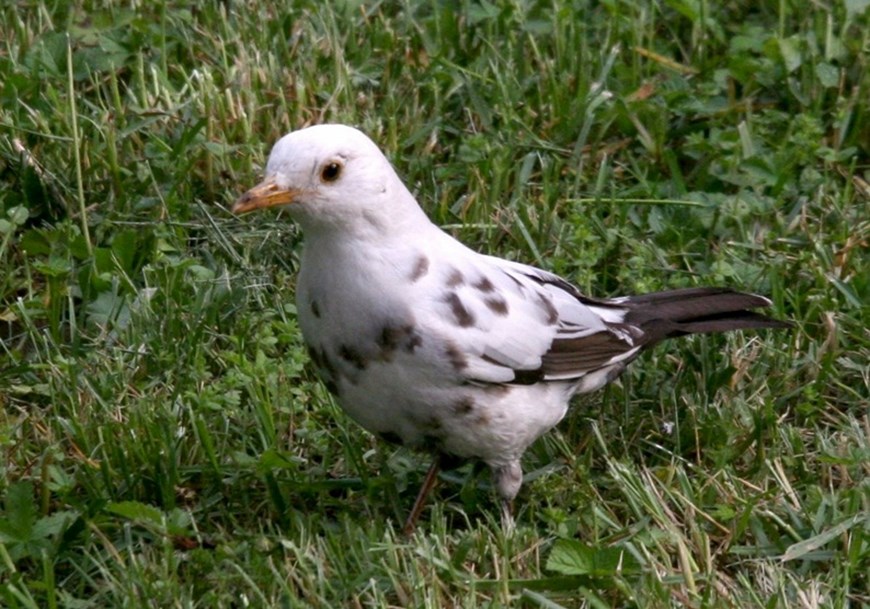
Source: Flickr
Photo: Michele Lamberti
A famous case of an Albino Humpback Whale called Migaloo has been around for nearly 30 years. Remarkably, Migaloo’s albinism has had the opposite effect to the normal fate of albino animals. Instead of suffering an early death, Migaloo’s prominence has helped to raise the profile of humpback whales in Australia and elsewhere making the headlines as he migrates along the East Australian Current.
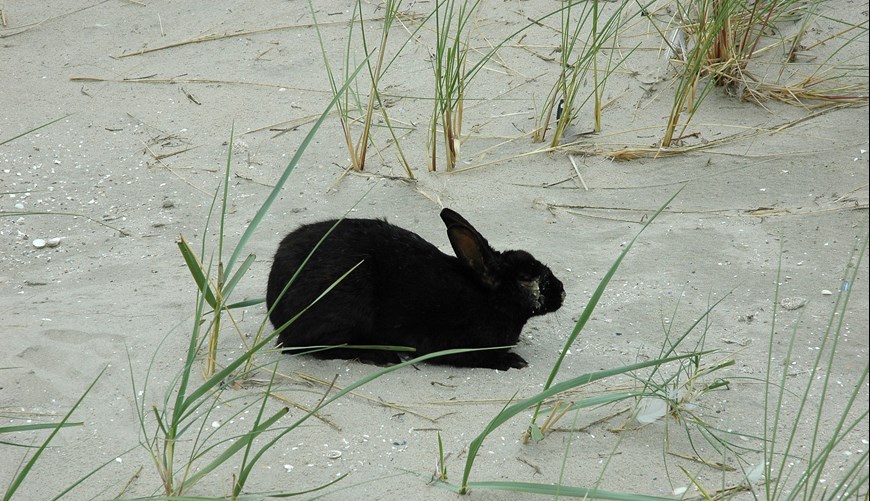
Source: Flickr
Photo: Bas Kers (NL)
We also have occasional reports of pale-furred possums and kangaroos, and a recent news story about a Melanistic Galah. We certainly have documented occurrences of these sort of pigment-related mutations in our Museum research collections dating back many decades. In fact, our Natural Science Collections show a higher percentage of animals with pigment aberrations compared to the ‘norms’ than would exist in the wild, as in many cases, they were collected on the basis that they were rare. Museums are fantastic places for yet another reason – our Collections provide the primary material that is used to discover, document, and disseminate information about variation in populations of all sorts of animals.
Hybrid theory
Yet another possible source for unusual or aberrant colouration in animals is the rather rare but known phenomenon of hybridization, the cross-breeding of two different species. Although it is tempting to think that this is where new species arise, unfortunately it isn’t quite that simple. The reality is that although some related species can interbreed and produce offspring that look 'cross-bred', these animals are infertile – they can’t go on to produce further offsping of their own; so in evolutionary terms, it’s a dead-end. There are a few famous cases of this, such as the Mule and the Liger, but this kind of hybridization is most common when the animals are share an enclosure when in captivity. However, this is not always the case – we recently had someone send us an image of a bird that looked to be a hybrid of an Eastern and Crimson Rosella.
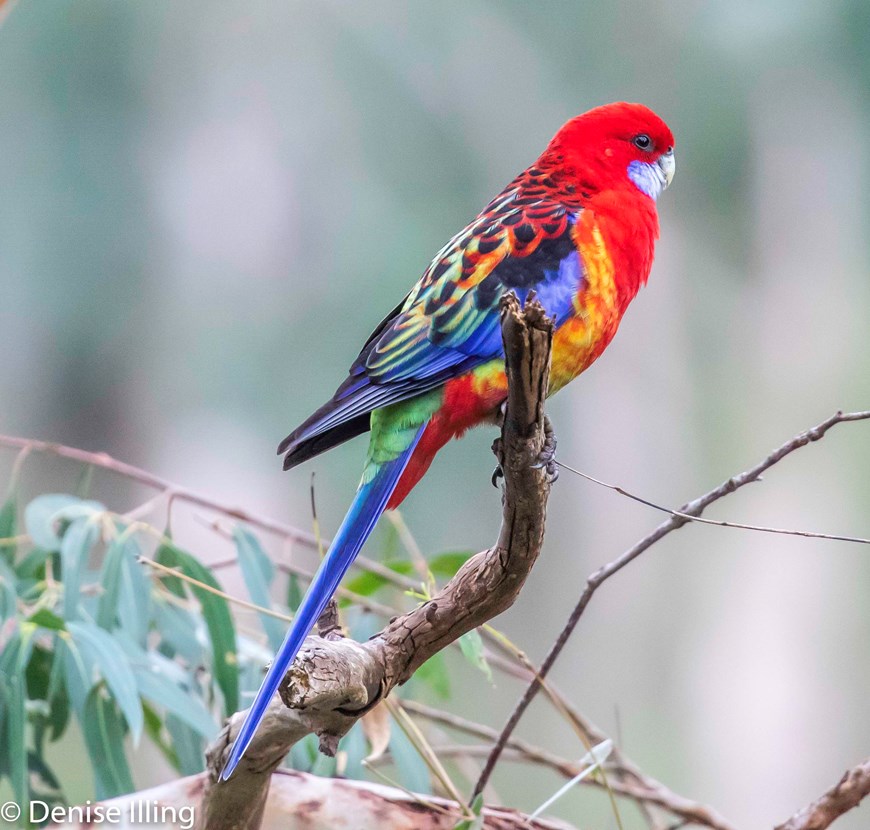
Source: Denise Illing
Photo: Denise Illing
A final note: artificial colouration
The last, and perhaps least helpful, source of colour variation is largely the fault of us humans – frequently we use artificial pigments and dyes in waste water or pesticide-treated plant material as a means of non verbally communicating ‘caution, this stuff isn’t safe’. If an animal, unable to interpret this visual cue’ is lucky enough to survive the ill-effects of the dyed material (or, if they are immune to the treatment), the dyes can leave a tell-tale hue to the colour of the animal – this has been the explanation for the ‘blue birds’ (typically water birds) that can be found referred to online often. There are also instances of colouration being influenced by diet – a Red Factor Canary, when fed foods rich in carotene, will become vividly reddish-orange; similarly some insects that feed on plant material can express the pigments of the food; for example some Garden Katydids that feed on roses can spend some of their life cycle a pale rosy pink.
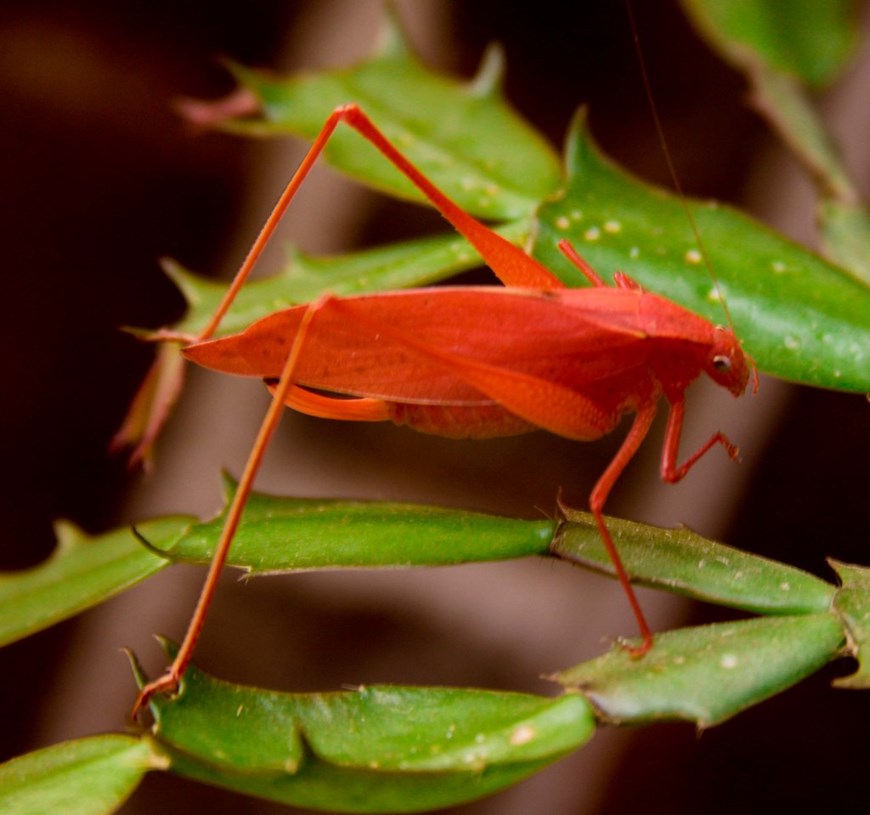
Source: Flickr
Photo: Doryce Stephens Stultz
So, if you do see an animal that looks a bit out of the ordinary in its colours, keep in mind there could be a number of reasons that might explain the differences. And of course, if you need any help in identifying any animals you see around, send us an email at [email protected] with some images and location information, and we’ll see if we can help identify it – it's a free service!

